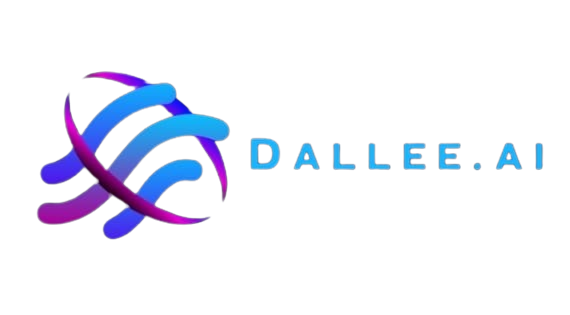Ai News
How AI is Transforming The Insurance Sector in USA?

The insurance industry, which is a vital sector of the global financial framework and a crucial factor in managing risks, has evolved considerably over the years. More recently, the use of artificial intelligence technologies has become the enabler of change, touching upon almost all aspects of the insurance business. In this article, we continue our journey into how AI is revolutionizing insurance in the USA and what kind of impact it has on customer experience, claims, risks, and frauds.
Customer Experiences Enhanced
In today’s environment, it is very important to note that AI technology is being used more and more as virtual assistants are working in chatbots on chat boards in addition virtual assistants that are Interact with users, respond to requests, and help policies make decisions as well as processes with the help of NLP, the king of all machine learning algorithms.
NLP’s and various machining algorithms play a very good role in answering the various queries of the customers which is very time efficient in the process no matter if any of the customers Need to enter any new policy details then need to inquire about the status of invitation or consider available coverage options now along with AI functions provide a high level of satisfaction.
Streamlined Claims Processing
Typically, claims processing was paper-based, time-consuming, and marginalized by administrative procedures. Now applied to routine tasks, advanced technologies have significantly boosted the claims process across the entire cycle. Here’s how:
Fraud Detection:
Machine learning uses past occurrences of fraudulent acts to identify fraudulent claims in insurance. In this way, based on the detected anomalies and potentially illicit activities, the insurer will be able to prevent further losses before they go astray.
Image Recognition:
Image recognition using AI technologies estimates the losses from the photos of the accident scene or property inspection. This also helps in expediting the claims assessment process and makes for prompt payment.
Predictive Analytics:
Machine learning algorithms estimate the extent of potential losses to enable insurers to optimize their use of resources. For instance, if a claim is suspected to be of high value, it is accorded the necessary attention immediately.
Risk Assessment and Underwriting
AI changes risk assessment by processing big data, checking experience in other claims, credit scores, external factors, and many others. Here’s how it impacts underwriting:
Precision Underwriting:
Regarding risk evaluation, it is also important to note that AI is more accurate than conventional methods when it comes to evaluating the risk associated with an individual. Through the gathering of different data input factors (like social activity, driving patterns, or health status), insurance policies adjust toward individual customer needs.
Automated Decision-Making:
Since risk is analyzed and policy terms are set quickly, the latter is solved by AI-driven algorithms. This leads to reductions in the amount of human involvement and the time required for it to issue the policies.
Dynamic Pricing:
Real-time information also forms the basis for re-evaluation of premiums by AI. For example, there is usage-based auto insurance where one reaches certain rates dependent on new behavior, and thus safer driving is encouraged.
Fraud Detection and Prevention
Fraud in insurers’ circles runs into billions every year. AI plays a crucial role in combating fraud.
Anomaly Detection:
It utilized several complex algorithms that would look at existing claims and pick out anomalies. From faked car accidents due to technology challenges, to fake claims of related injuries, to the risk of identity theft when anything can be connected online, AI is alarming.
Behavioral Analysis:
When it involves customer market behavior, AI will find out anomalies. For example, any fluctuation in the rates as regards the claim frequency or any other exceptional occurrence as regards the claim timing leads to investigations.
Network Analysis:
It further establishes the links between the different claimants, the agents, and the service providers in the circulation of information. It is also aimed at suspicious networks where fraud rings are likely to be conducted.
Challenges and Considerations
While AI promises transformation, challenges persist:
Data Quality:
It is, therefore, important that AI and its parameters rely on good data. However, this process does not mean that the data used by insurers is clean and organized and contains no errors, which can lead to incorrect predictions.
Ethical Use:
Responsible management is significant for the appropriate relation between the use of automated decision-making tools and the adherence to ethical principles. Another issue that is pertinent in contemporary society is questions relating to fairness, transparency, and biasing.
Change Management:
This means that insurers must promote the active use of AI across their organizations. It is crucial that employees are trained in how new technologies will be implemented, why people may feel threatened by AI, and properly incorporate AI into the workplace.
Read Also: How Ai Is Transforming The Education Sector In The USA?
Conclusion
Artificial Intelligence in the insurance sector has a bright future but execs must apply the right processes, think about the use of data, and create the right demand. In becoming a stronger force, AI will allow insurers to leverage their future dispensation to succeed with greater ease in a rapidly shifting market. In other words, the application of AI in insurance is no longer about innovation but more of a revolution. The adoption of AI across different touchpoints, be it customer interactions, behind-the-scenes claims management, or powerful fraud mechanisms is the key to an adaptive, responsive, and customer-focused insurance industry in the USA. The relationship between AI and insurance remains mixed and sophisticated, and the prospect of enhancing this industry through AI applications is unlimited. The generative AI therefore offers a clear path to discover new insights, improve processes, and strengthen the ability to make informed decisions among insurers.
Follow Dallee for more Ai Updates and News.

-

 AI Chatbot1 year ago
AI Chatbot1 year agoJoyland AI: An In-Depth Guide to AI Storytelling and Character Creation
-

 Artificial Intelligence1 year ago
Artificial Intelligence1 year agoIs Janitor AI down? Analyzing Janitor AI’s Current Status:
-

 Artificial intelligence1 year ago
Artificial intelligence1 year agoWhat is Chain-of-Thought (CoT) Prompting: A Beginner’s Guide
-

 Ai News1 year ago
Ai News1 year agoChat GPT Login: Easy Step-By-Step Access Guide
-

 Artificial intelligence1 year ago
Artificial intelligence1 year agoBeta Character AI: Everything You Need To Know
-

 Ai News1 year ago
Ai News1 year agoGPT-5: Features, Abilities And Everything You Should Know About GPT-5
-

 Art generator1 year ago
Art generator1 year agoTop 8 Free NSFW AI ART Generators From Text Prompts
-

 Ai Tool1 year ago
Ai Tool1 year agoHow To Make Download Video From Y2mate com 2024



